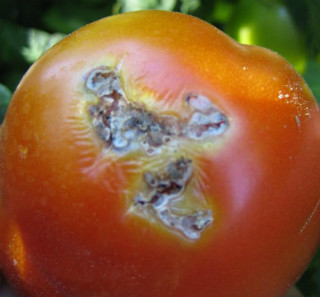Tuta absoluta moth caused heavy loss in tomato crops in Yemen
Community and Forum → Blog → Tuta absoluta moth caused heavy loss in tomato crops in Yemen
Lev Bely, 23.04.2013 23:23
The Ministry of Agriculture and Irrigation said that it has been unable to wipe out the Tuta absoluta moth that was discovered late last year. As reported, the moth destroyed 90% of tomato crops in Yemen bringing losses about $350 million.
Dr. Mohammed Al-Ghashm, the deputy minister of the Ministry of Agriculture and Irrigation said they have been spraying a pesticide on crops which kills the male moth, leaving the female’s eggs infertile.
Yemen got serious financial help from other countries. Al-Ghashm said the United States and Community Livelihood Project, a USAID program, granted Yemen $555,000 and $238, respectively. The United Nations Food and Agriculture Organization donated $120,000 to help combat the invasive moth in Yemen, according to Al-Ghashm.
The Government of Yemen allocated as well YR200 million (around $930,000) in addition to YR50 million (about $232,000) from the Credit Agriculture Cooperative Bank and the Fishing and Agriculture Fund.
Al-Ghashm said the ministry has also launched educational programs, distributing brochures and reaching out to other media outlets.
T. absoluta was first discovered in South America in 1970, then in Spain in 2006, and year later the pest widely spread over France, Italy, Greece, Malta, Morocco, Algeria and Libya. Turkey had it first losses in tomato crops in 2009 when local farms and greenhouses were damaged by T. absoluta.
Wajeeh Al-Matwkil, the head of Researches and Guidance Department at the Ministry of Agriculture, said the moth was first discovered in the northern governorate of Sa’ada in 2012 and later in the country’s west, in Tehama.
Al-Matwakil said the T. absoluta is a surprisingly resilient pest, immune to many types of pesticides. When farmers sprayed chemicals, the moths’ population grew.
Yahiya Al-Salami, a farmer in Dhamar, said the damages caused by this worm led to a rise in tomato prices across the country. “One kilogram of tomatoes used to cost YR200, less than $1. Now tomatoes cost as much as YR700, about $3,” said Al-Salami.
Yemen Times, http://www.yementimes.com
Photo: a damaged tomato, http://www.chemtica.com
All the rest posts on: Africa, Pests, danger zone, agriculture
Comments
New comment
Note: you should have a Insecta.pro account to upload new topics and comments. Please, create an account or log in to add comments.
* Our website is multilingual. Some comments have been translated from other languages.
Random species of the website catalog
News
- 02.03.2025: Moscow Insect Fair: New section on the Insecta.pro Website
- 31.12.2024: Если нужно загрузить на сайт много фотографий
- 10.12.2024: Новое поле в «Поиске энтомологов»
New photos (03.03.2025)
Fresh from the community
- 15:47, P. Khramov: The "official" section of the Mosco...
- 14:25, P. Khramov: With the blessing of Pavel and Anat...
- 20:46, P. Khramov: / Viktor Kolesnikov → Elachista / ...
Popular insects
Recommended blog topics
- ICZN Election of Commissioners
- Meanwhile, in Kotelnich
- University of Utah study: young moth males go for females and fail




























